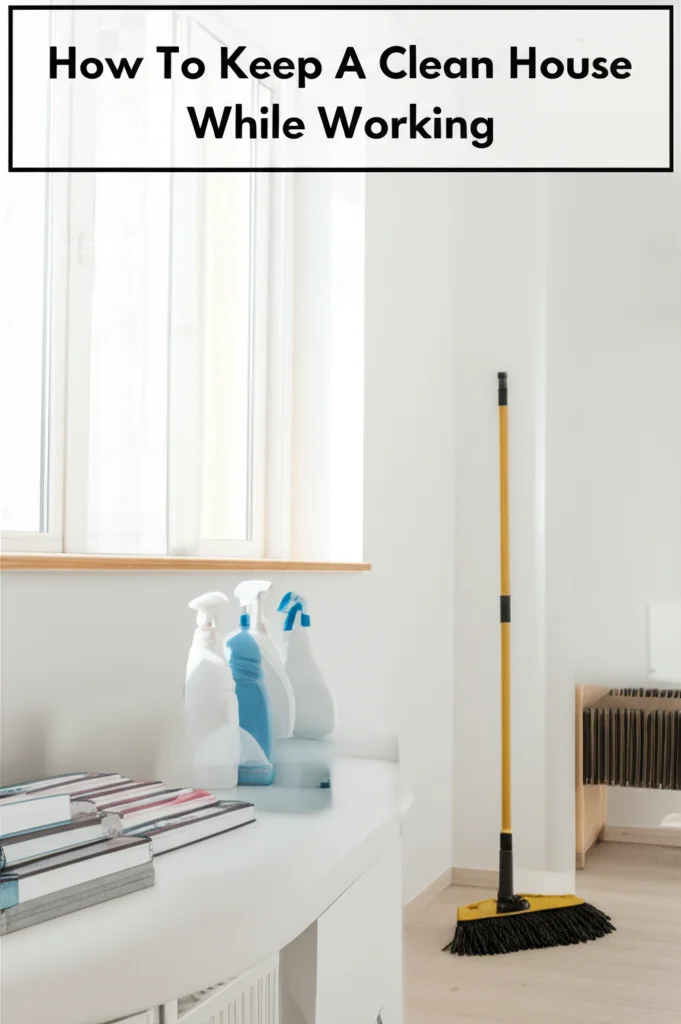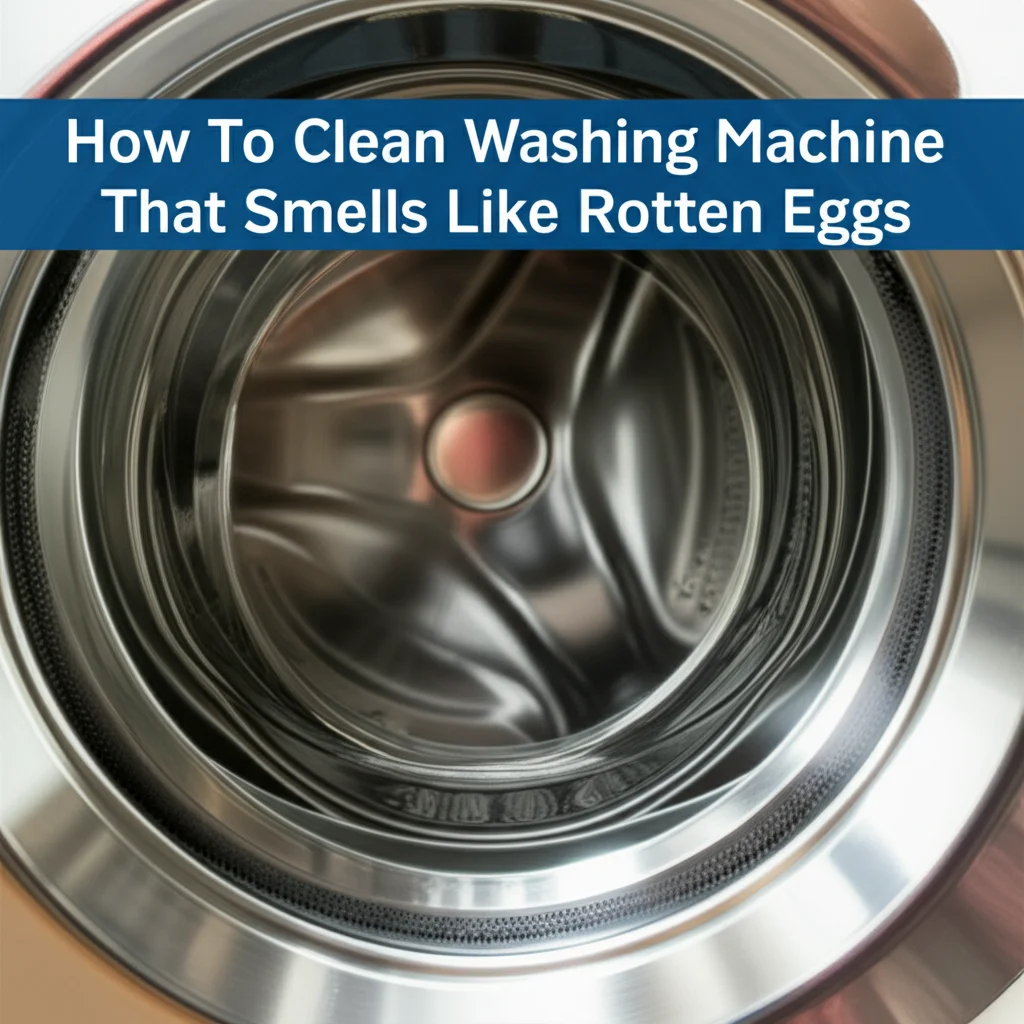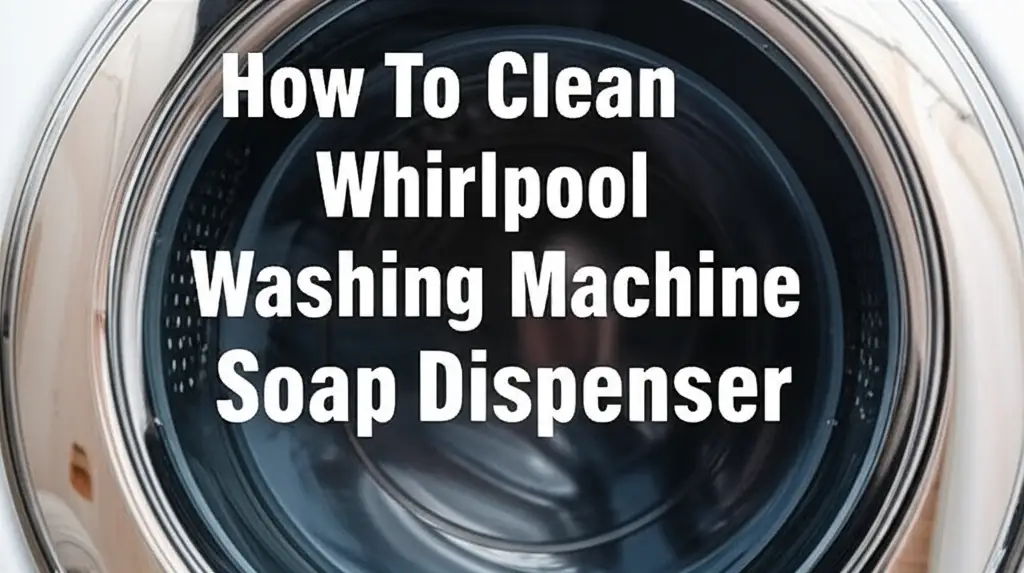· Kianna Connelly · Home Organization & Cleaning · 16 min read
How To Keep A Clean House While Working

Effortlessly Keep a Clean House While Working
Balancing a demanding job with household chores feels like a never-ending battle for many of us. You come home tired, often with little energy left for cleaning. The thought of a messy home can add to your stress, making relaxation difficult. But what if I told you that a clean home and a busy work schedule can coexist?
Many people believe a clean house is a luxury only for those with endless free time. This is simply not true. You can maintain a tidy and welcoming living space, even with a full-time job. It takes smart planning, consistent habits, and the right approach. This article shares practical steps and unique insights to help you keep a clean house while working, transforming your home into a peaceful sanctuary.
Takeaway
- Implement daily “micro-cleaning” habits.
- Create and follow a simple, realistic cleaning schedule.
- Declutter regularly to reduce cleaning efforts.
- Utilize smart tools and involve all household members.
- Prioritize consistency over perfection for lasting results.
To keep a clean house while working, integrate small, consistent cleaning actions into your daily routine, establish a flexible weekly schedule, and leverage efficient tools. Prioritize decluttering, involve family members, and focus on maintaining cleanliness rather than deep cleaning all at once.
Embrace the Power of Daily Micro-Cleaning Habits
Daily habits are your secret weapon for keeping a clean house while working. These are small, quick tasks that prevent dirt and clutter from building up. Think of them as preventative measures. When you tackle messes as they happen, you avoid large cleaning jobs later. This approach saves time and energy in the long run.
Starting your day with a quick tidy-up sets a positive tone. Before leaving for work, make your bed. This instantly makes your bedroom look neater. Wipe down bathroom counters after getting ready. These simple acts take less than a minute but make a big impact. When you return home, your space feels more organized.
Evenings offer another chance for micro-cleaning. After dinner, immediately wash dishes or load them into the dishwasher. Wipe down kitchen surfaces. Put away items as you use them. This “put away as you go” rule is very powerful. It stops clutter from spreading throughout your home. I find that doing these small tasks helps me unwind after a long day. It also means I wake up to a cleaner space each morning.
Consistency is key with these habits. Do not skip them, even on busy days. Remember, a few minutes daily is better than hours later. These small efforts help you maintain a cleaner living environment. They prevent overwhelming cleaning sessions. This strategy is essential for anyone wanting to always have a clean house, even when work demands most of your time.
- Morning Routine:
- Make your bed.
- Wipe down bathroom sink after use.
- Put away clothes.
- Evening Routine:
- Load or wash dishes immediately after meals.
- Wipe down kitchen counters and stovetop.
- Tidy living room by putting items back in place.
- Do a quick sweep or vacuum of high-traffic areas.
These small, consistent actions significantly reduce the time needed for major cleaning. They help you maintain a sense of order. This makes your home a more relaxing place to be.
Strategic Scheduling: Create a Realistic Cleaning Schedule
A structured cleaning schedule is vital when you work full-time. It helps you allocate time for cleaning without feeling overwhelmed. Think about your energy levels and free time. A realistic schedule considers your work hours and personal life. Do not try to fit too much into one day. This leads to burnout and gives up on your goals.
Start by listing all necessary cleaning tasks. Group them into daily, weekly, and monthly categories. Daily tasks are the micro-cleaning habits we discussed. Weekly tasks might include vacuuming, bathroom cleaning, and kitchen deep wipes. Monthly tasks could be dusting light fixtures or cleaning specific appliances. Once you have your list, assign tasks to specific days or times. Maybe you dedicate 30 minutes on a weekday evening to one main area. Perhaps you save a few hours on Saturday morning for bigger jobs.
Make your schedule visible. Put it on your fridge or use a digital calendar. This serves as a helpful reminder. Be flexible with your schedule. Life happens, and sometimes you will miss a cleaning slot. Do not let one missed session derail your whole plan. Simply adjust and pick up where you left off. A well-planned cleaning routine helps you manage your home effectively. It ensures you clean your house according to a schedule, making it easier to keep a clean house while working.
- Daily Tasks (5-10 minutes each):
- Kitchen surface wipe-down.
- Quick floor sweep in main areas.
- Bathroom counter wipe.
- Weekly Tasks (30-60 minutes each session):
- Monday: Vacuum/mop floors.
- Wednesday: Clean bathrooms (toilet, sink, shower).
- Friday: Kitchen deep clean (stovetop, sink, counters).
- Monthly Tasks (1-2 hours total):
- Dust ceiling fans and light fixtures.
- Clean inside of microwave and oven.
- Wash curtains or blinds.
This structured approach makes cleaning feel less daunting. You know what needs doing and when. This reduces decision fatigue and keeps your home consistently tidy.
Decluttering: The Foundation of a Clean Space
Decluttering is perhaps the most impactful strategy for keeping a clean house while working. A cluttered home always looks messy, even if it is technically clean. Less stuff means less to clean, less to organize, and more clear surfaces. It saves immense time and effort in the long run. I have found that a decluttered space significantly reduces my cleaning time.
Start small when decluttering. Do not try to clear out your entire house in one weekend. This can be overwhelming. Instead, pick one small area. It could be a drawer, a shelf, or a single countertop. Empty the area completely. Sort items into three piles: keep, donate/sell, and trash. Be honest with yourself about what you truly need and use. If you have not used an item in a year, consider letting it go.
Make decluttering a continuous process, not a one-time event. Integrate it into your weekly or monthly cleaning schedule. For example, dedicate 15 minutes each Sunday to decluttering one specific spot. This could be mail, papers, or old magazines. When new items enter your home, decide where they belong immediately. If something comes in, something similar should go out. This “one in, one out” rule helps maintain a clutter-free environment. A decluttered space feels calmer and more inviting. It also makes actual cleaning tasks much faster and more effective. You will find it much easier to make your house look clean when there is less stuff to move.
- Start with Small Zones:
- A single kitchen drawer.
- The top of your bedside table.
- One shelf in your pantry.
- Follow the “One In, One Out” Rule:
- When you buy a new shirt, donate an old one.
- If a new book comes in, consider donating one you have already read.
- Regular Purges:
- Schedule a 15-minute decluttering session once a week.
- Focus on high-traffic areas like entryways or dining tables.
Decluttering provides a fresh start for your cleaning efforts. It simplifies your life. This helps you keep a clean house while working.
Harnessing Smart Tools and Efficiency Hacks
Working professionals need cleaning methods that are fast and effective. This means using the right tools and knowing a few efficiency hacks. Investing in smart cleaning tools can cut your cleaning time significantly. They do the hard work for you. For example, a robot vacuum can run daily while you are at work. This keeps floors consistently clean with no effort from you. I personally love my robot vacuum; it is a true game-changer.
Keep cleaning supplies organized and accessible. Store them where you use them most. For instance, keep bathroom cleaner and a cloth in each bathroom. Keep kitchen wipes under the sink. This saves time walking back and forth to a central cleaning cabinet. When a spill happens, you can clean it up instantly. This prevents the mess from setting or spreading.
Adopt “speed cleaning” techniques for quick touch-ups. Focus on visible surfaces and high-traffic areas first. Do a quick wipe-down rather than a deep scrub if time is short. Use multi-surface cleaners to reduce the number of products you need. Work from top to bottom, and clean from dry to wet. Dust high surfaces before vacuuming floors. These techniques help you speed clean your house efficiently, even when you have limited time. Efficiency is key to keeping a clean house while working.
- Essential Smart Tools:
- Robot Vacuum: Runs automatically, keeping floors tidy daily.
- Microfiber Cloths: Effective for dusting and wiping surfaces without harsh chemicals.
- All-Purpose Cleaner: Reduces the need for multiple specialized products.
- Squeegee: Quickly cleans shower walls after each use to prevent mildew.
- Efficiency Hacks:
- Zone Cleaning: Focus on one small area at a time until it is fully clean.
- Carry a Caddy: Keep all necessary supplies for a room in a portable caddy.
- Clean As You Go: Wipe up spills immediately, put items away after use.
- Multi-Tasking: Clean the bathroom sink while waiting for the shower to heat up.
Using these tools and hacks allows you to maximize your cleaning output in minimal time. This makes maintaining a clean home much more manageable alongside a busy work schedule.
Delegate Tasks and Involve the Household
You are not alone in keeping your home clean, especially if you live with others. Delegation is a powerful strategy for busy working individuals. Sharing responsibilities lightens the load for everyone. It also teaches children valuable life skills. A clean home is a shared responsibility. Discuss cleaning expectations with your family. Make sure everyone understands their role.
Assign specific chores to different family members. Create a chore chart. Even young children can help with simple tasks. They can put away toys or make their beds. Teenagers can take on more significant roles. They might handle vacuuming or cleaning bathrooms. When everyone contributes, the house stays cleaner with less effort from any single person. This is crucial for keeping a clean house while working.
Hold a weekly family meeting to review chores and address any issues. Make it a positive experience, not a source of conflict. Celebrate successes. If you live alone, consider hiring professional help for periodic deep cleaning. Even a monthly or quarterly service can make a huge difference. It takes the pressure off you for bigger tasks. This allows you to focus on daily maintenance. Outsourcing certain tasks is a smart investment in your peace of mind and time. This strategy helps you maintain a clean home without overwhelming yourself.
- Family Chore Examples:
- Kids: Put away toys, make bed, clear own plate after meals.
- Teens: Take out trash, load/unload dishwasher, vacuum common areas.
- Partners: Share responsibilities for cooking, laundry, and bathroom cleaning.
- Tips for Delegation:
- Be Specific: Clearly define each person’s task.
- Lead by Example: Show them how to do it correctly.
- Rotate Tasks: Keep things fair and prevent boredom.
- Appreciate Efforts: Acknowledge and thank them for their contribution.
Involving everyone creates a sense of teamwork. It ensures that cleaning tasks are distributed fairly. This makes maintaining a clean home a collective effort, not a solo burden.
Master the Art of Spot Cleaning and Problem Areas
Spot cleaning is your best friend when you have limited time. It involves addressing small messes as they happen, preventing them from becoming bigger problems. This is especially true for common problem areas that get dirty quickly. When you notice a spill, wipe it up immediately. Do not wait until later. This simple action saves you from scrubbing dried-on grime. It is a core part of keeping a clean house while working.
Focus on high-traffic zones and visible surfaces. The kitchen counter, bathroom sink, and living room coffee table often need quick daily attention. A quick wipe down with a damp cloth can remove dust and crumbs. This keeps these areas looking neat. For example, a quick spray and wipe of the bathroom sink after brushing teeth takes seconds. It prevents toothpaste buildup.
Dust is another common culprit that makes a house look less clean. Integrate quick dusting into your routine. Use a microfiber cloth to quickly wipe down surfaces. Focus on eye-level areas first. A quick run over the television stand, coffee table, and nightstands can make a big difference. Addressing dust regularly also improves air quality. Even tackling specific issues like dust from your house regularly can prevent significant build-up. This proactive approach saves time and energy for busy individuals.
- Common Problem Areas and Spot Cleaning:
- Kitchen Counters: Wipe daily after cooking/eating.
- Bathroom Sinks/Toilets: Quick wipe down of sink and exterior of toilet daily or every other day.
- Entryway Floors: Quick sweep or vacuum to remove dirt tracked in.
- Mirrors/Glass: Keep a glass cleaner and cloth nearby for quick touch-ups.
- Dusty Surfaces: Do a quick swipe on visible furniture surfaces every few days.
By addressing these small messes promptly, you prevent them from accumulating into larger, more time-consuming cleaning projects. This keeps your home looking presentable with minimal daily effort.
Regular Purging: Beyond Decluttering, Keeping Only Essentials
Regular purging takes decluttering a step further. It is about actively evaluating what you own and removing items that no longer serve a purpose. While decluttering focuses on reducing clutter, purging aims for minimalism and intentional living. This mindset helps you maintain a clean house while working. Less stuff means less to manage, less to clean around, and more space for living.
Think about your possessions actively. Do you use this item? Does it bring you joy? If the answer is no to both, consider letting it go. Schedule seasonal purges. For example, once every three months, go through your wardrobe. Remove clothes you have not worn in a year. Do the same for kitchen gadgets or books. This prevents accumulation. It ensures your home only contains items you value.
A purged home simplifies your cleaning routine significantly. There are fewer items to dust, fewer drawers to organize, and more clear surfaces. This makes daily tidying quicker and more effective. It also creates a sense of calm in your living space. When you prioritize essentials, your home becomes a haven, not a storage unit. This approach helps you maintain a consistently clean environment.
- Seasonal Purge Focus:
- Spring: Wardrobe, linens, outdoor gear.
- Summer: Papers, office supplies, digital files.
- Fall: Kitchen gadgets, pantry items, crafts.
- Winter: Toys, books, decorative items.
- Purging Questions:
- Have I used this in the last 12 months?
- Do I have another item that serves the same purpose?
- Does this item bring me joy or solve a problem?
- Is this item easy to store and maintain?
Adopting a mindset of regular purging simplifies your home life. It ensures every item has a purpose. This drastically reduces cleaning time and effort, making it easier to keep your house clean while working.
Mindset Matters: Cultivating a Clean-Home Mentality
Keeping a clean house while working is not just about techniques; it is also about your mindset. Your approach to cleaning can make it feel like a burden or a manageable part of your life. Cultivating a positive and proactive clean-home mentality is crucial. Do not view cleaning as a punishment. See it as an investment in your well-being and peace of mind. A clean space often leads to a clear mind.
Break tasks into smaller, more digestible chunks. Instead of thinking “I need to clean the whole house,” think “I will clean the kitchen counter today.” This makes the task feel less daunting. Celebrate small victories. Acknowledging that you tidied up, even for just 10 minutes, reinforces positive behavior. It builds momentum. Avoid the all-or-nothing trap. Even five minutes of cleaning is better than none.
Remember your “why.” Why do you want a clean house? Is it for relaxation, entertaining, or reduced stress? Keeping your motivation in mind helps you push through when you feel tired. My goal is a calm space to unwind after work. This helps me stay consistent. Think of cleaning as self-care. It creates a comfortable environment for you to thrive in. This shift in perspective is powerful. It turns a chore into a beneficial habit. It makes how to clean a home less about rules and more about your personal space.
- Shift Your Perspective:
- View cleaning as maintenance, like brushing your teeth.
- See a clean home as a benefit for your mental peace.
- Understand that small efforts prevent large problems.
- Set Realistic Expectations:
- Your home does not need to be perfect. Aim for “clean enough.”
- Accept that some days will be better than others.
- Reward Yourself:
- After a cleaning session, enjoy your tidy space.
- Take a moment to relax in your clean environment.
Adopting this proactive and positive mindset helps embed cleaning into your routine naturally. It transforms the task from a burden into a habit that supports your well-being.
FAQ Section
How often should I clean my house if I work full-time?
You should aim for daily micro-cleaning (10-15 minutes), weekly focused cleaning (30-60 minutes per session), and monthly deep cleaning for specific areas. Daily habits prevent major buildup, while weekly tasks ensure key areas stay clean. This balanced approach helps you maintain a tidy home without overwhelming your schedule.
What are the most important areas to clean daily?
Focus on high-traffic and high-use areas daily. These include kitchen counters, the kitchen sink, the bathroom sink, and quick tidying of living room surfaces. Making your bed also significantly impacts the overall appearance of your bedroom. Addressing these spots prevents messes from accumulating and makes your home feel much cleaner.
Can I really keep a clean house without spending hours cleaning?
Yes, absolutely. The secret lies in consistency and efficiency. By implementing daily micro-cleaning, adhering to a realistic schedule, and regularly decluttering, you prevent major messes. This means you do not need to dedicate long hours to cleaning. Smart tools and shared responsibilities further reduce your personal effort, making it highly achievable.
Should I hire a cleaner or do it myself?
Deciding to hire a cleaner depends on your budget, time, and personal preference. If you are extremely busy and can afford it, a professional cleaner for weekly or bi-weekly deep cleaning can save you significant time and stress. However, with the strategies outlined, you can maintain a clean house yourself without needing constant professional help.
How can I motivate myself to clean after a long workday?
Motivation often follows action. Start with a very small, non-negotiable task, like washing one dish or wiping one counter. Set a timer for 5-10 minutes and see what you can accomplish. Listen to music or a podcast. Remember your “why”—the peace a clean home brings. Even small efforts build momentum and make a difference.
What tools make cleaning easier for busy people?
Smart tools significantly help. A robot vacuum cleans floors autonomously. Microfiber cloths are excellent for quick dusting and wiping surfaces. All-purpose cleaners reduce the number of products you need. Keep a squeegee in the shower to prevent soap scum buildup. These tools streamline tasks and save you valuable time, making cleaning more efficient.
Conclusion
Keeping a clean house while working full-time is not a fantasy; it is a perfectly achievable goal. By embracing daily micro-cleaning habits, creating a realistic cleaning schedule, and consistently decluttering, you lay the groundwork for a continuously tidy home. Remember to leverage smart tools for efficiency and involve everyone in your household in the cleaning process. This shared responsibility lightens the load and fosters a sense of collective ownership.
The key to success is consistency over perfection and adopting a positive mindset toward cleaning. Do not let small lapses derail your efforts. Every small action you take contributes to a cleaner, more peaceful living space. Your home should be a sanctuary, a place where you can relax and recharge after a busy day. Start implementing these strategies today and transform your approach to keeping a clean house while working, creating the harmonious environment you deserve. Take the first step and enjoy the benefits of a consistently clean home.
- clean house while working
- home cleaning tips
- housekeeping strategies
- busy home organization
- maintain clean home





